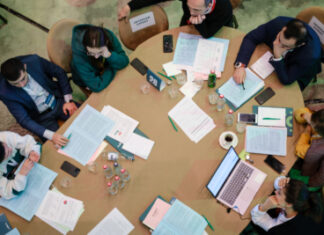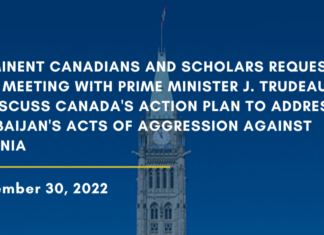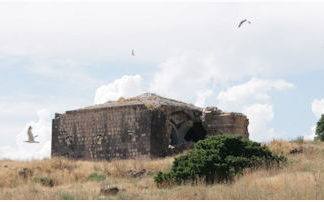STEPANAKERT (various media sources) — According to officials from Armenia and the Republic of Mountainous Karabagh, Azerbaijan launched a broad offensive on April 1, prompting a counterattack. At least 50 people have died in heavy fighting. After an abortive ceasefire unilaterally declared by Azerbaijan on April 3, a new ceasefire was declared at noon on April 5 by officials from both Azerbaijan and Karabagh. News reports from the front lines state that the fighting had died down in general, yet the Karabagh government has claimed several violations of the ceasefire by Azerbaijani artillery, leading to fire returned by its own forces.
Since the signing of a ceasefire in 1994, years of negotiations primarily under the leadership of the Organization for Security and Cooperation in Europe’s Minsk Group have failed to reach a lasting political settlement. Sporadic fighting continued, with the intensity of clashes escalating in recent years.
The recent fighting included the use of tanks, helicopters, heavy artillery, rocket systems and drones. Colonel Viktor Arustamyan, a deputy chief of the Karabagh military headquarters, told Reuters that the recent fighting “was the most serious aggravation of the situation since the 1994 ceasefire.” The first day of fighting was the bloodiest, with Azerbaijan reporting 12 soldiers killed and Karabagh officials reporting 18 dead. A 12-year-old boy was also reported killed during the fighting. On April 5, Azerbaijan said that 16 soldiers had been killed in the last two days of fighting before the ceasefire was announced. Karabagh officials said 29 of their soldiers had been killed since the fighting started, and another 101 wounded. Both sides have claimed to have killed hundreds of opposing soldiers, while reporting losses of their own in the dozens.
According to Armenian sources, on April 1 and throughout the morning of April 2, large-scale offensive military actions were conducted by Azerbaijani forces. Missile artillery units shelled both Karabagh Armenian defense positions and civilian settlements, including with MM-21 (Grad) multiple rocket launchers. The latter at 8:30 on April 2 hit Martuni, Karabagh, killing 12-year-old Vaghinak Grigoryan and wounded two other -. Four other civilians were later wounded. On April 3, Armenian sources state that 3 Armenian civilians in Talish who had not been evacuated were killed (Valera Khalapyan and his wife Ramela, as well as Marusya Khalapyan, born in 1924).
“On early morning of April 3, the adversary carried out new attacks in the Horadiz-Nyuzger direction by using armored vehicles. Defense Army units and civilian settlements in Martakert and Talish were bombarded. These attacks were suppressed. The battles in the Kazakhlar-Nyuzger and Tapkarakoyunlutalish directions continued throughout the day. On the morning of April 4 the adversary carried out new attacks by using armored battle vehicles. The attacks were blocked. Battles continued throughout the day,” Arustamyan said. He reported that the adversary for the first time fired the TOS heavy flamethrower system, without result, and tried to use a UAV, which was destroyed by the Defense Army.
By April 4, Arustamyan said that Azerbaijan lost 18 tanks, 3 battle vehicles, 1 military/engineering hardware, 2 helicopters, 6 UAVs and 1 MM-21 artillery system while Karabagh lost 7 tanks. On the other hand, its forces had advanced 2-300 meters and gained control of five military positions in the Kazakhlar-Nyuzger direction, and 3 positions in the Talish-Matakhi-Tapkatakoyunlu area. However, the Armenians claimed to have taken the offensive and regained some territories from the Azerbaijanis during the last period of fighting before the ceasefire.









